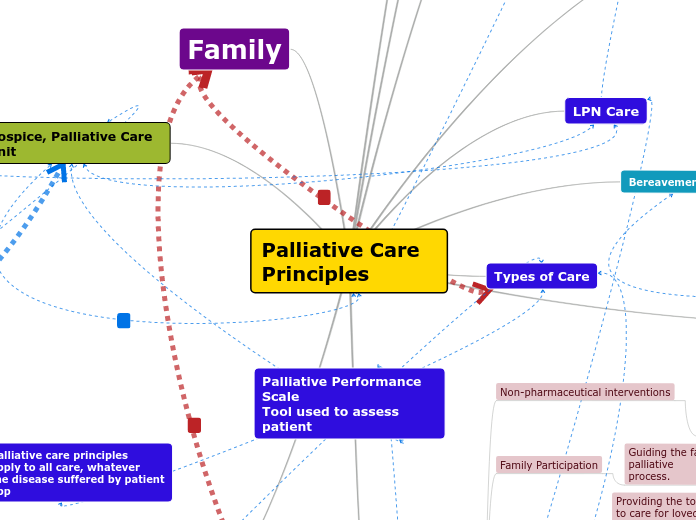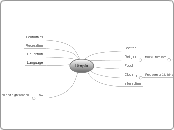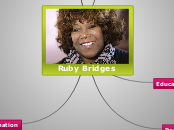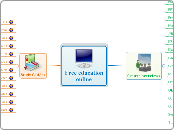Relationships between theories of collaboration, group practices, and curriculum development
Collaborative relationships enhance the ability to develop an aligned and updated curriculum. Curriculum design or development teams require support to be effective in their role. Teachers often observe needed changes in curriculum and updates to materials but are not trained in curriculum design practices to implement the practices. Teachers are often called upon by design teams to ask what current trends and materials are, or to be subject matter experts in the process. As noted before teachers often learn what changes need to be made from students, either directly through CCD or indirectly through student feedback and observation. This relationship works collaboratively to align curriculum with current practices, but many teachers also lack the required skills as well. This is when best online practices must support the collaboration between curriculum development, teacher, and student. The best practices that support online teacher collaboration also support teachers in curriculum design. An example of this support would be providing a teacher to teacher workshop on effective curriculum design, creating curriculum change from student feedback, using outside professionals as SMEs, or working in collaboration with curriculum design teams. Additional students in collaboration learning also need to understand how to use and provide feedback. A student orientation on peer collaboration or team collaboration would be useful to support students in this effort. Theories of collaboration can be applied to student and teacher roles in curriculum design. A collaborative team can positively produce aligned curriculum, improve learning outcomes of a student, and enhance teacher knowledge and ability (Voogt, Pieters, & Handelzalts, 2016).
The theories of collaboration, Collaborative Course Development (CCD), Collaborative Peer Learning, and Online Learning Theory all have similar focuses to promote understanding through the teaching and sharing of knowledge. These theories are student-centered, using an instructor as a facilitator versus as an instructor. The student gains positive outcomes by becoming a facilitator or knowledge therefore gaining and promoting their understanding of subject matter further. Although very similar, the theories also contrast. For example, the student is an active participant in all theories. In CCD, the student is an active participant evaluating, reflecting, and designing curriculum. In Collaborative Peer Learning, which is a 2:1 model of two students to one facilitator. There is no mention of actual student feedback for curriculum design. This model however will promote changes in curriculum as feedback is a large focus in the model. Student share and learn knowledge within their group and bring feedback to the facilitator. While this most likely to be thought of only to promote learning within the course and for student learning. The teacher will gain knowledge of how the student learns and understands the material. The Online Collaborative Learning Theory promotes a high level of critical thinking skills in student development. In similarities, it is student-centered, facilitator driven, and moves in a collaborative, group format environment. Many assignment rely on peers to complete assignments such as discussion boards. Students learn to agree and disagree while gaining an understanding of the subject matter. The instructor remains a facilitator in this environment. Similar to the Collaborative Peer Learning, the facilitator has little interaction until the feedback portion of the course. This is area where the facilitator can perform teaching duties in assisting the student in understanding how to provide feedback. It is also fruitful for curriculum design. Facilitators can learn from the student feedback and apply to the curriculum. While these are work in different ways on developing curriculum, the student plays a similar role, although the level is different. The CCD model has the highest level of student involvement within curriculum design although Collaborative Peer Learning and Online Learning Theory focus on feedback.
Reference theories and practices of collaboration from research
Collaborative theory develops from a basic psychological theory of working together to learn, solve, and understand. Collaboration is one of the 21st-century skills that many students strive to achieve, and many schools strive to include in the curriculum. The reason behind this is that collaboration is a crucial skill in building relationships and networking, not only in academia but in the corporate world. Collaboration theories form from constructivist learning theories supporting in which students are supported in learning together, being an active participant in learning, and the teacher acts a facilitator versus an instructor (Harasim as cited in Bates, 2015).
Collaborative theories incorporate student involvement and are referenced in this context for team collaboration on how to further curriculum development with student reflection, understanding, and learning. Three models that evolved out of Collaborative learning theory are Collaborative Course Development, Collaborative Peer Learning, and Online Collaborative Learning Theory. Each of these models is formed from the constructivist learning theory. In Collaborative Course Development (CCD), the theory supports student-centered learning to provide a student voice in curriculum design and planning of courses (Aiken, Heinze, Meuter, & Chapman, 2016). This collaboration is a positive process providing students the opportunity to have a choice in their education, gain empowerment by being an active voice in an involved member of a team, and working together in the act of collaboration (Aiken, Heinze, Meuter, & Chapman, 2016).
The Collaborative Peer Learning model is generally known as a 2:1 learning model but is now trending towards a facilitation model (Lynam, Corish, & Connolly, 2015). The supporting theory is for students to gain knowledge through sharing the knowledge of teaching. The structure is for paired or groups of students to practice in facilitation, reflection, and peer observations. The positive outcomes of this theory are that students gain confidence in working in groups and having increased skills time. Students also benefit from practice in facilitation, reflection, and providing feedback.
Online Collaborative Learning Theory (OCL) developed through the constructivist approach and online learning (Bates, 2015). This approach is based on a facilitated group learning style simulating classroom seminars through what is now popularly known as discussion boards (Bates, 2015). OCL results in a high level of critical thinking skills produced through group discussions where the learner uses phases of knowledge construction in learning (Harasim as cited in Bates, 2015). Learners who use higher level skills such as brainstorming, analysis, organizing, and consensus or what Bates labels“intellectual convergence” (2015, p. 133) will have a high ability to collaborate with peers and instructors.
Practices of collaboration
There are practices of collaboration, such as teachers to professional and online teacher collaboration that follow collaboration theories in education and the corporate world. Teachers often collaborate or consult with subject matter experts in their field to support the curriculum, specifically in science and technology fields. Alternatively, teachers often bring professional into the classroom to provide a real-world perspective on content. The are possible barriers such as time, funding, and accessibility (Munson, Martz, & Shimek, 2013). Best practices encourage using strategies to maximize time through technology, search for funding through grants and resources, and create networking opportunities (Munson, Martz, & Shimek, 2013). To further collaboration between student, professionals, and teachers, it is encouraged to use student reflection following professionals visiting the classroom. This feedback is viable to reinforcing the real-world curriculum and furthering this collaboration. As discussed teacher previously to teacher collaboration in an online environment is a needed practice to benefit the mirroring collaboration that transpires typically in a traditional educational setting. Seo & Han (2013) discussed providing a virtual community that is voluntary are best practices to promote the sharing of ideas, materials, and emotional support needed to promote collaboration. It is helpful to allow teachers to be consumers of this process if needed, as most people are consumers of the materials and support before providing it.
Analyze relationships between effective group practices and educational setting
My educational setting
The instructor’s educational setting is a free online university for undergraduate students using adjunct professors for instructing. The online learning environment uses Moodle, a learning management software that primarily has all of the curriculum preset by a curriculum development team. Upon hiring, adjunct professors use Moodle to learn how to teach through the LMS using the university’s peer assessment learning system. The university’s goal is to have every instructor understand how to support this style of learning.
The University uses a peer assessment learning system in which students receive peer assessments from discussion boards and written assignments. It is the instructor’s job to review these each week, coaching students on how to effectively and correctly assess their peers as well as ensuring each student receives a fair grade. Quizzes, exams, learning journals, case studies, and portfolios are instructor assessed and graded.
The practices in place for instructor support and learning are instructor orientation, online peer forums for the support that provides a place for encouragement and to share teaching ideas and online workshops and materials. The university encourages instructors to support one another within the instructor forum. It is also encouraged to contact the design team when errors, broken links, out of date material are found within the courses. The design team also contact course instructors frequently to collaborate on updating and improving current and creating future courses.
Effective online group practices
Research has found that instructors naturally trend toward collaboration in online learning environments in the form of supporting, sharing, and learning (Seo & Han, 2013). The online environment created barriers where traditional collaboration most often developed, such as face-to-face discussions, meetings, emotional support, and sharing of knowledge. For this reason, virtual spaces need to be created for teachers to collaborate. Forms of collaboration that develop from virtual spaces are the sharing of experiences, sharing of teaching materials, question and answer forums, peer support forums, and teacher to teacher workshops (Seo & Han, 2013). Seo & Han (2013) note from their research the sharing of teaching materials is the most widely used form of collaboration with the most number of posting and most numbers of hits, the second most popular form are question and answers forums and peer support, which falls under the community category. It is also important to note that ensuring that collaboration is voluntary, and there are no mandates of time place on an instructor to participate in collaboration is important. Seo & Han (2013) discuss their research findings and observations of teachers increased mandates on time, and many teachers prefer to view postings of others but do not participate themselves.
Thesis: Effective online team collaboration for development of curriculum requires student and teacher orientation, workshops, and support to ensure understanding of roles.
References
Seo, K., & Han, Y. (2013). Online teacher collaboration: A case study of voluntary collaboration in a teacher-created online community. KEDI Journal of Educational Policy, 10(2) Retrieved from http://library.capella.edu/login?qurl=https%3A%2F%2Fsearch.proquest.com%2Fdocview%2F1474099831%3Facco
Aiken, K. D., Heinze, T. C., Meuter, M. L., & Chapman, K. J. (2016). Innovation Through Collaborative Course Development: Theory and Practice. Marketing Education Review, 26(1), 57–62. https://doi-org.library.capella.edu/10.1080/10528008.2015.1091679
Lynam, A.-M., Corish, C., & Connolly, D. (2015). Development of a framework to facilitate a collaborative peer learning 2:1 model of practice placement education. Nutrition & Dietetics, 72(2), 170–175. https://doi-org.library.capella.edu/10.1111/1747-0080.12133
Bates, T. (2015, April 05). Teaching in the Digital Age. Retrieved May 24, 2019, from https://opentextbc.ca/teachinginadigitalage/chapter/6-5-online-collaborative-learning/
Munson, B. H., Martz, M. A., & Shimek, S. (2013). Scientists' and teachers' perspectives about collaboration. Journal of College Science Teaching, 43(2), 30-35. Retrieved from http://library.capella.edu/login?qurl=https%3A%2F%2Fsearch.proquest.com%2Fdocview%2F1463596604%3Fac
Joke M. Voogt, Jules M. Pieters & Adam Handelzalts (2016) Teacher collaboration in curriculum design teams: effects, mechanisms, and conditions, Educational Research and Evaluation, 22:3-4, 121-140, DOI: 10.1080/13803611.2016.1247725
Explain differences and similarities of theories of collaboration
Differences
Online Collaborative Learning
facilitated in online learning environment
Collaborative Peer Learning typically 2:1 ratio
how can this be applied toward curriculum?
focuses on learning rather than curriculum development
uses in education versus professional development
Theories have similar focus on goal
instructor as a facilitator
Student-centered approach
results in positive outcomes for students
through teaching and sharing of knowledge
Gain understanding
Relationships between theories of collaboration, group practices, and curriculum development
Maintaining connecting with SME and networking with community
How student feedback can support teachers in curriculum development
Teachers and the curriculum development team relationship
Collaboration is supported by sharing of knowledge that shown by best practices and exampled collaborative theories
Referenced theories and practices of collaboration from research
Practices of Collaboration
Online Teacher Collaboration
sharing of ideas, materials, support in an online environment
Teachers to professional
(Munson, Martz,, & Shimek, 2013)
using student reflection to
best practices
strategies
barriers
building relationships with outside subject matter experts (SME)
Collaborative Theory
working together to learn, solve, understand
Team collaboration is an essential component of curriculum development in higher education. In the online learning environment, instructors, students, and design development teams can work within their roles to reflect and share best practices and theories. Best practices should take skills formed from theories of collaboration such as Collaborative Course Development, Collaborative Peer Learning, and Online Collaborative Learning Theory and combine with practices used in building team roles between teachers and professionals and teacher to teacher. The Collaborative Theories highlight the need for student involvement in reflection to develop or improve curriculum. This is an added practice that produces a different perspective, showing how the student understands, learns, and perceives the information provided. The key to the component of incorporating the best practices and collaboration theories is to ensure all persons involved understand their roles by providing workshops, orientations, and support in the online environment.
Analyze relationships between effective group practices and your educational setting
Effective Online Group Practices
Any collaboration should be voluntary
Teacher to teacher workshops
Forums providing peer support
Question and Answer forums
Sharing of teaching materials
(Seo & Han, 2013)
Sharing experiences
(Seo & Han, 2013)
My setting: Online University and peer learning
Collaborative Peer Learning Model
Uses peer assessments in discussion forums and written assignments
My setting: Online University using adjunct professors
Course developers collaborate with professors to change, update, and design curriculum
All collaboration is voluntary
Online workshops and materials
encouragement to share teaching ideas
Online peer forums for support









